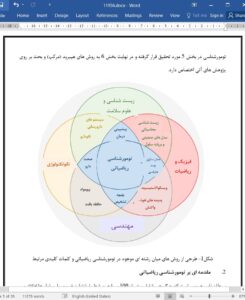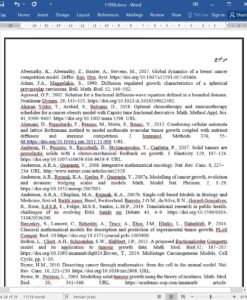Abstract
Mathematical Oncology investigates cancer-related phenomena through mathematical models as comprehensive as possible. Accordingly, an interdisciplinary approach involving concepts from biology to materials science can provide a deeper understanding of biological systems pertaining the disease. In this context, fractional calculus (also referred to as non-integer order) is a branch in mathematical analysis whose tools can describe complex phenomena comprising different time and space scales. Fractional-order models may allow a better description and understanding of oncological particularities, potentially contributing to decision-making in areas of interest such as tumor evolution, early diagnosis techniques and personalized treatment therapies. By following a phenomenological (i.e. mechanistic) approach, the present study surveys and explores different aspects of Fractional Mathematical Oncology, reviewing and discussing recent developments in view of their prospective applications.
1. Introduction
Cancer embodies a group of diseases that emerge from abnormally mutated cells and can appear in almost any body organ or tissue. It is the second leading cause of death worldwide and survival rates are profoundly related to timely access to quality diagnosis and treatment (World Health Organization, 2020). Experimental oncology and techniques involving molecular biology and, more recently, genetics have dominated most research projects on the subject, increasing the knowledge on malignancies characterization, diagnostic and treatment (Gatenby and Maini, 2003). In the last few decades, physics and mathematics have been increasingly applied to cancer-related problems, thus giving rise to a new research area (Byrne, 2010; Rockne and Scott, 2019).
7. Concluding remarks
There are tools in Mathematics still waiting to establish their way in Theoretical Biology and such is the case of fractional (i.e. non-integer order) calculus, whose historical and philosophical aspects have attracted growing interest. As addressed and discussed in the present review work, the application of fractional calculus indeed arises as powerful and strategic modeling approach in view of prospective challenges and opportunities in Mathematical Oncology. Besides wellknown advantages of either testing or reproducing different in silico scenarios (which could be impractical or even impossible via corresponding in vitro experimentation), Fractional Mathematical Oncology can straightforwardly deal with heterogeneous scales, memory effects and/or dormancy periods related to tumor onset and development.











